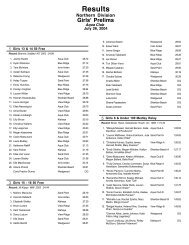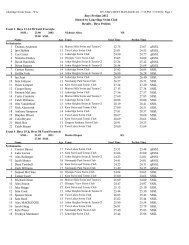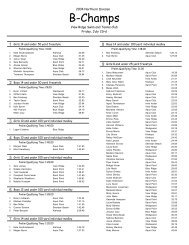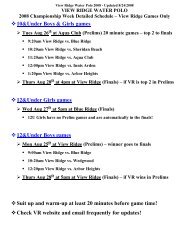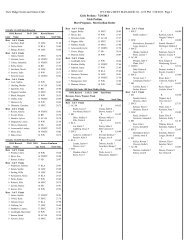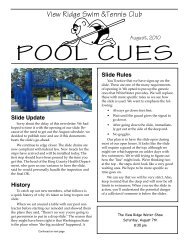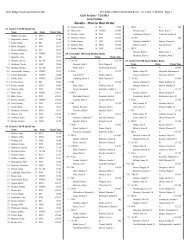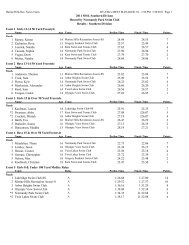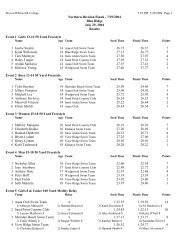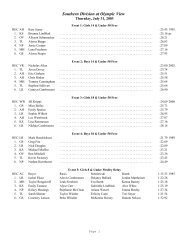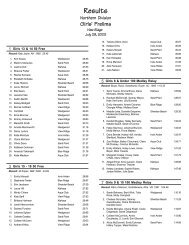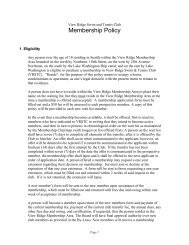Operating Plan (pdf) - View Ridge Swim and Tennis Club
Operating Plan (pdf) - View Ridge Swim and Tennis Club
Operating Plan (pdf) - View Ridge Swim and Tennis Club
You also want an ePaper? Increase the reach of your titles
YUMPU automatically turns print PDFs into web optimized ePapers that Google loves.
Athletes with the signs <strong>and</strong> symptoms of concussion should be removed from play immediately.Continuing to play with the signs <strong>and</strong> symptoms of a concussion leaves the young athlete especiallyvulnerable to greater injury. There is an increased risk of significant damage from a concussion for aperiod of time after that concussion occurs, particularly if the athlete suffers another concussion beforecompletely recovering from the first one. This can lead to prolonged recovery, or even to severe brainswelling (second impact syndrome) with devastating <strong>and</strong> even fatal consequences. It is well known thatadolescent or teenage athlete will often under report symptoms of injuries. And concussions are nodifferent. As a result, education of administrators, coaches, parents <strong>and</strong> students is the key for studentathlete’s safety. If you think your child has suffered a concussionAny athlete even suspected of suffering a concussion should be removed from the game or practiceimmediately. No athlete may return to activity after an apparent head injury or concussion, regardless ofhow mild it seems or how quickly symptoms clear, without medical clearance. Close observation of theathlete should continue for several hours. The new “Zackery Lystedt Law” in Washington now requires the consistent <strong>and</strong> uniform implementation of long <strong>and</strong> well-established return to playconcussion guidelines that have been recommended for several years:“a youth athlete who is suspected of sustaining a concussion or head injury in a practice or game shall be removed from competition at that time” <strong>and</strong>“…may not return to play until the athlete is evaluated by a licensed heath care providertrained in the evaluation <strong>and</strong> management of concussion <strong>and</strong> received written clearance toreturn to play from that health care provider.” You should also inform your child’s coach if you think that your child may have a concussion.Remember, it’s better to miss one game than miss the whole season. And when in doubt, the athlete sitsout.For current <strong>and</strong> up-to-date information on concussions you can go to:http://www.cdc.gov/ConcussionInYouthSports/_____________________________ _____________________________ ____________Student-athlete Name Printed Student-athlete Signature Date___________________________________ ___________________________________ ______________Parent or Legal Guardian Printed Parent or Legal Guardian Signature DateAdapted from the CDC <strong>and</strong> the 3rd International Conference on Concussion in SportDocument created 11/01/2009



